There is a humble build-it-yourself boat—a one-design, if you will—that is more numerous than any other, and that may be having a more profound impact on the larger world in general than any boatbuilding project of its size should. It is the Six-Hour Canoe, originally conceived and first built by Mike O’Brien in the dark ages, ca. 1977.
Mike looms large in the boating world. He has been sailing since he was seven, rowed eight-oared shells in college, was indomitable in New Jersey surfboat rowing competitions, designed and built numerous boats, served as the senior editor at WoodenBoat magazine for two decades, and self-published Boat Design Quarterly for 28 years. I have heard that he pours yacht white enamel on cedar shavings for breakfast and his hot morning beverage is pine tar. It is most appropriate that the genesis of the Six-Hour Canoe should be Mike.
Among Mike’s devotees would be Richard Butz, William Bartoo, and John Montague. After a pilgrimage from Buffalo State College to the WoodenBoat office in Brooklin, Maine, the three had their epiphany over cups of coffee with Mike and his basic drawing of the little flat-bottomed double-ender that would become the Six-Hour Canoe. When the three college professors trekked back to the boatbuilding wilderness of western New York, together they took the simple design and from it organized, drew up, and drafted Building the Six-Hour Canoe. Published in 1994 by Tiller Publishing and distributed for the past 20-some years by The WoodenBoat Store.
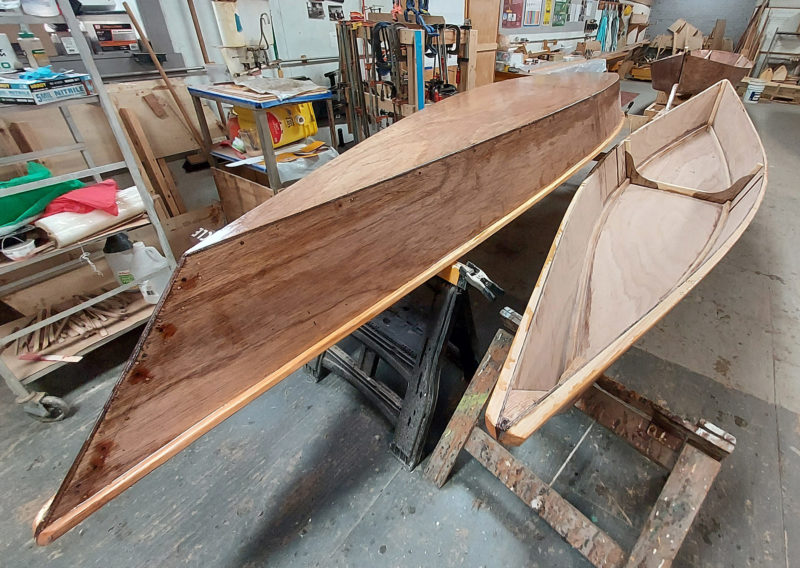 Photographs by the author
Photographs by the authorThe canoe takes shape around a single frame when the sides are bent to meet at the ends. The bottom is initially cut oversize, glued and nailed in place, and then trimmed flush with the sides.
There are several important bits of information to reveal about Butz, Bartoo, and Montague before I get into the glue and shavings. When they set about to create the manual for the canoe, they were not experienced boatbuilders. They all were, and still are, experienced and passionate educators, steeped in arts and crafts. One is a potter with a strong sense of how to get things done; one produces penciled doodles at meetings that are works of art; and one is a craftsman/designer of fine furniture. Montague’s uncluttered illustrations, the clear step-by-step organization by Butz, and the logical assemblage methods by Bartoo make the manual a very model of how such things should be done. To build this canoe as cost-effectively and efficiently as possible, you’ll want to closely follow the manual. With it in your workshop, you will be able to build a fully functional 15′3″ double-ended canoe.
Nowhere in the manual does it say that you should have some familiarity with basic boatbuilding, and that’s because you don’t need it. If you’re on your own and have no prior woodworking experience, the manual gives you enough information in the instructions, lists of materials, and required tools that you can always figure out what to do next. Since you’re not building a fine yacht that will last for decades, it is possible to build this boat with leftovers and tools that might be lying around your shop, garage, or basement.
The students and teachers in the photographs that illustrate the steps of building the boat for this article are all from Buffalo’s St. Mary’s School for the Deaf. They had almost no prior woodworking experience, but you can see how well their boats turned out and what skills they learned as they built the boats.
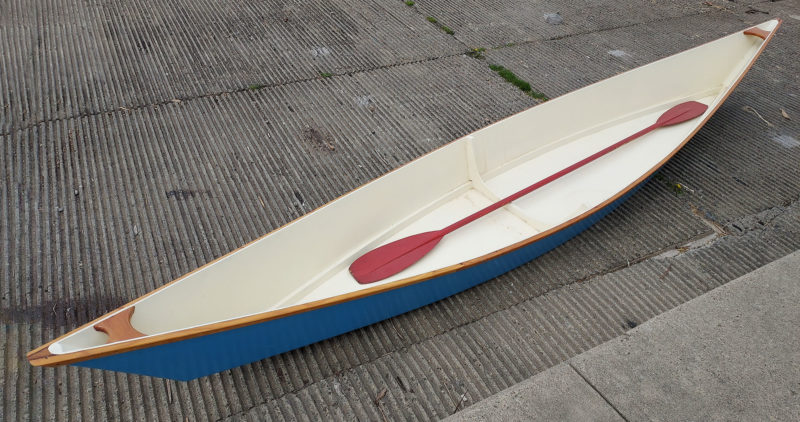
Sitting in the bottom of the canoe keeps the weight low for the best stability. Some will find a low seat pad and a backrest provide comfortable accommodations.
In the “Designer’s Introduction” for the first edition of the manual, Mike describes throwing the first Six-Hour Canoe together from leftovers. While his leftovers included two perfect sheets of 1/4″ Bruynzeel plywood—known for rot resistance, strength, and beauty—and, I’m sure, some bronze screws, ring nails, and lengths of mahogany, you don’t necessarily need the expensive materials that happened to be lying around in the boatbuilding shop of an experienced boatbuilder. The Six-Hour Canoe can be built of high-quality boatbuilding materials, but it really only requires two sheets of 1/4″ plywood of some sort; some 16′-long, 1″-thick lumber for the ’midship frame, chine logs and outwales/rubrails; short pieces of 2″ stock for the stem- and sternposts; and some fastenings.
While I urge our students to use the best materials for strength, longevity, and beauty, we know of many fully functional Six-Hour Canoes built using underlayment, common hemlock/fir/spruce lumber, and drywall screws. While 1/4″ exterior plywood is a common type found in home shops, marine-grade fir plywood is a step up. Pressure-treated southern yellow pine is rot-resistant and usable for the structural members, as long as it has been allowed to dry thoroughly so that epoxy will stick to it. The boat built with the least-expensive materials will probably not last as long, but it will be a boat that you can use and learn from. Building this first boat will also let you know if you want to spend the time and money to build something that will take you just a little further beyond the basics.
Epoxy is crucial for building a durable Six-Hour Canoe and is one of the few materials you should buy if the leftovers you have in the shop have been sitting for years. Thickened epoxy is a strong gap-filling material for less-than-perfect fits, and unthickened epoxy will toughen up the surface of a doorskin or underlayment panel until it can serve as a durable, waterproof hull. With some fiberglass cloth or tape on the outside of the chine and maybe other places such as the inside and outside of the bottom panel, even the least rot-resistant plywood will hold up for quite a few years of seasonal use once it has been epoxied.
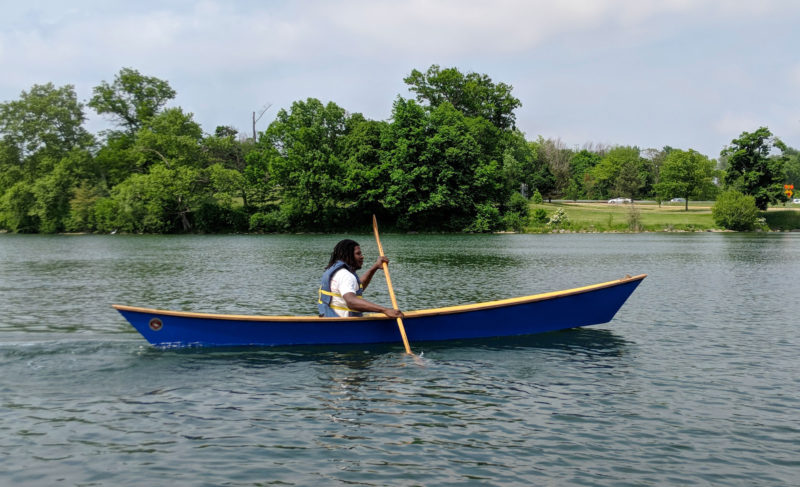
The canoe is designed primarily for solo use by a single paddler sitting amidships. Two kids, seated in the ends, can paddle with single-bladed paddles.
Unlike most wooden boat building, the construction method for the canoe uses no strongback or other setup jig. The method used works perfectly well and saves on additional purchases of lumber. In fact, although your knees and back will complain, with a bit of patience you could build the boat right on the floor (although a pair of light sawhorses is recommended).
The two plywood sheets are butt-blocked together to make a 16′ panel. Sides, bottom, and some gussets are drawn onto the plywood using offsets and then battens to pick up the sheer. The rake of the stems is provided in measurements on the provided plan. The ’midship frame is made of three pieces of 1×2 stock screwed and glued together with gussets cut from leftover 1/4″ plywood; it establishes the sides’ flare, the width of the bottom, and the overall beam. The stem stock for the bow and stern is beveled to meet the sides and bottom, and while the stems are probably the most complex part of the build, Montague’s drawings clearly explain the cutting sequence to follow on the table saw. The stems are glued and screwed to the inner face at the appropriate ends of one topside panel. The ’midship frame is fastened with glue and screws in place between both panels. Then the ends of the panels are brought in and fastened together at the stems, and suddenly you can see that what you are building is in fact a real boat. Chine logs are fitted, glued, and screwed in place. When the glue has set, the chine log and lower edge of the topside panel are planed so that the bottom panel, which is the next to be fitted and fastened, will sit fair and flat, flush with the outside surface of the topside panels. The overhanging edges of the bottom panel are planed flush with the sides. The chine is covered with fiberglass tape set in epoxy. Sand, and then paint with your preferred finish. A good-quality paint with a high pigment content will give a longer-lasting finish, but decent exterior latex house paint can be a functional solution, with spar varnish for accents on the rubrails. Launch and paddle.
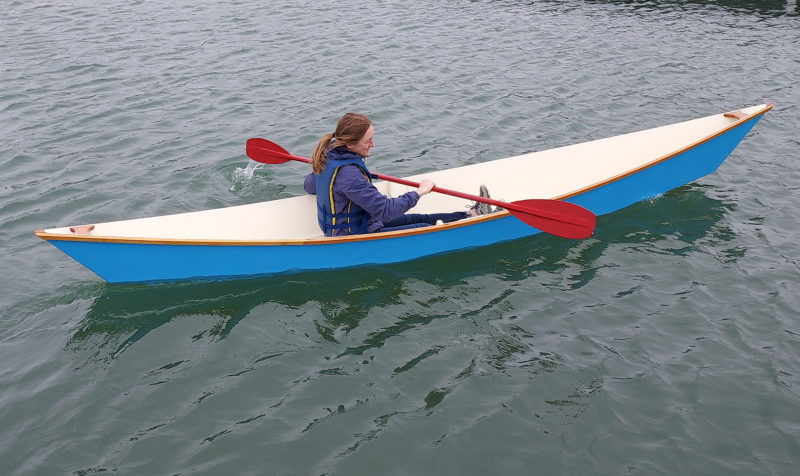
The canoe can carry up to 250 lbs and is intended for sheltered waters. “Its real application,” the book notes, “is in quiet ponds or lakes where its shallow draft makes it ideal for exploring.”
Our classroom shop building is within a block of the Niagara River, but we have never launched a Six-Hour Canoe at our local boat ramp: the river flows (in spots) at an estimated 15 miles per hour to Niagara Falls. However, there are countless— maybe thousands of—ponds, lakes, creeks, and smaller rivers nearby that could, most delightfully, be explored in one of these small lightweight paddle boats. The simple double-bladed paddle with plywood blades is perfect for moving the boat along at a canoe-like speed. It tracks well enough that it does not require constant steering. You can sit directly on the bottom of the boat, but there are several better options (including one shown in the manual) for a fairly comfortable seat with backrest that will keep your bottom from going numb too quickly. Some fancied-up Six-Hour Canoes have cloth end decks added that would shed a chop, but the boat really isn’t suited for those kinds of conditions. You can certainly carry enough stuff for a sizable picnic, but I wouldn’t load the boat down with serious camping gear that needed to be paddled for miles.
The canoe is suited for small kids to full-grown adults, and I can’t count the number of totally inexperienced people we have launched successfully into fun excursions in these boats. The Six-Hour Canoe is pretty easy for one person to load onto a car roof rack, as long as you can figure out how to tie it down securely.
The Six-Hour Canoe, in all its simplicity, is a perfect choice for a first boatbuilding project no matter what your age or skill level. We have students doing so in our classes at Buffalo Maritime Center all the time. In the various boatbuilding programs I’ve been involved in, I have partnered with boatbuilding students with every degree of hand-eye coordination to build hundreds of Six-Hour Canoes. Can it be built in six hours? Let me know, please.
The final chapter in Building the Six-Hour Canoe is about community boatbuilding. The educational objectives of the manual have become even more important since the 1990s, when industrial arts programming started to decline all over the U.S.
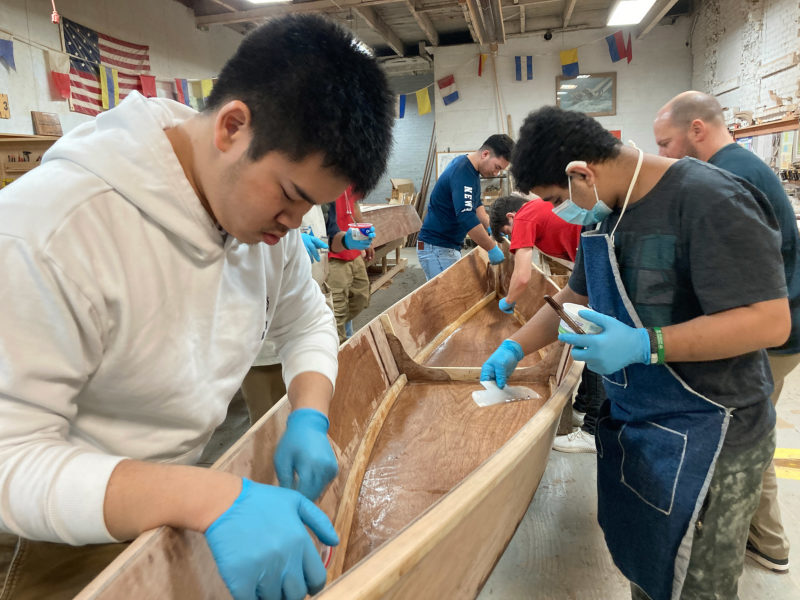
The Six-Hour Canoe has been popular with educational and community programs. Its quick construction and low cost makes it well suited as an introduction to woodworking and boatbuilding.
In our community boatbuilding programs we use mentors from our volunteer crew at the Buffalo Maritime Center. I believe that people are drawn to wooden boats because they embody an elevated expression of craftsmanship in build, form, and function. Each beautiful well-built wooden boat is tangible proof that a higher standard than one might have dreamed is achievable. When new volunteers arrive, we explain that we are not just building boats, but building successful kids. When our students launch their boats into our local lake, there is no way to describe the feelings welling up inside these kids with this proof that they have done something amazing. They leave our program knowing they have what it takes to make the world a better place.
The number of boats built is justification enough for my elevation of this boat and manual to a special place in the world of boats. The educational experience of using the manual to build a simple boat has provided a life-altering, profound experience to so many people; the Six-Hour Canoe is much more than just a boat. ![]()
Roger Allen grew up haunting the boatyards along the Delaware River in Bucks County, Pennsylvania, and sailing the shallow bays of the New Jersey shore in sneakboxes, garveys, and Aqua Cats. He was a ship’s carpenter on the 157′ barkentine, GAZELA PRIMEIRO, in Philadelphia and founded the Workshop on the Water for the Philadelphia Maritime Museum in 1979. At the workshop, he offered classes in boatbuilding, mounted nine exhibitions featuring individual vernacular small boats, and acquired boats for the museum’s collection. At the North Carolina Maritime Museum in Beaufort he produced similar programs as curator of boatbuilding technology and director of the museum’s Harvey W. Smith Watercraft Center. He moved to Cortez, Florida, to expand his preservation efforts around the village and the traditional lifestyles of its commercial fishermen. For the past 10 years, Roger has lived and worked in Buffalo, first as the Buffalo Maritime Center’s executive director and factotum, now as master boatbuilder of the 73′ replica Erie Canal boat, SENECA CHIEF.
Six-Hour Canoe Particulars
[table]
Length/15′3″
Beam/31.5″
[/table]
Building the Six-Hour Canoe is available from The WoodenBoat Store for $15. Other online book retailers also list the book.
Is there a boat you’d like to know more about? Have you built one that you think other Small Boats Magazine readers would enjoy? Please email us!
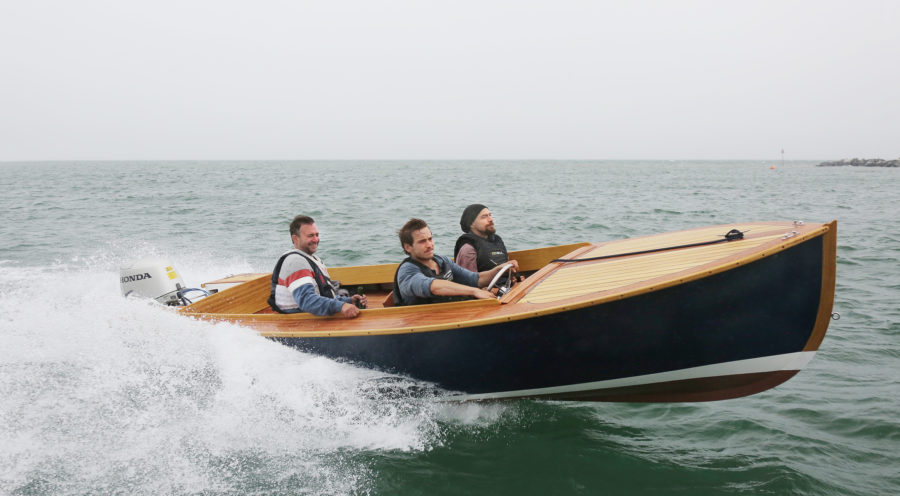
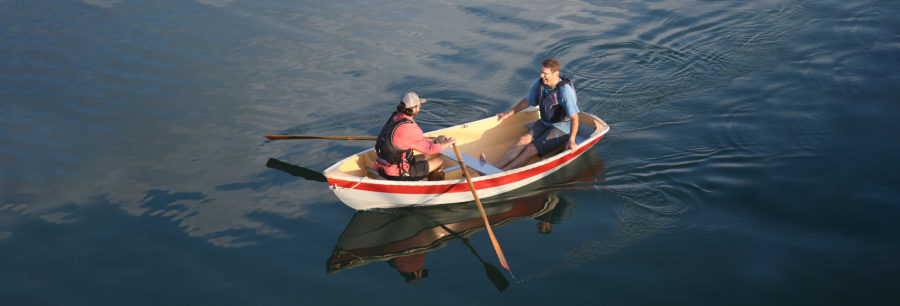

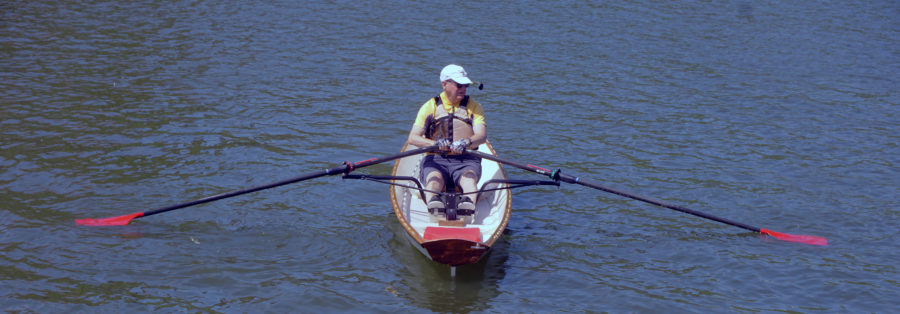

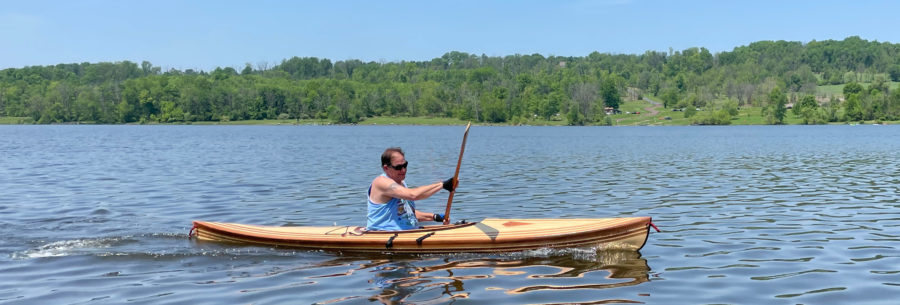


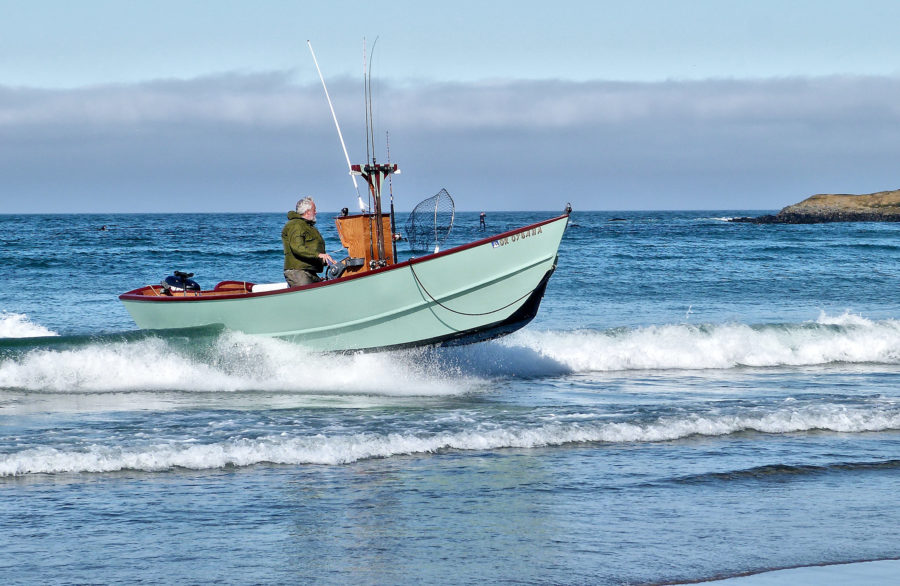
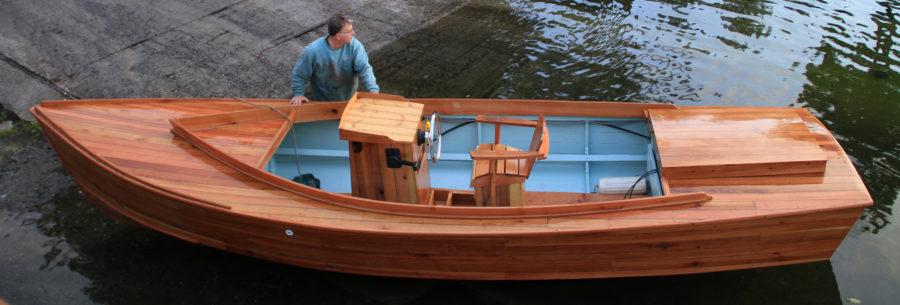
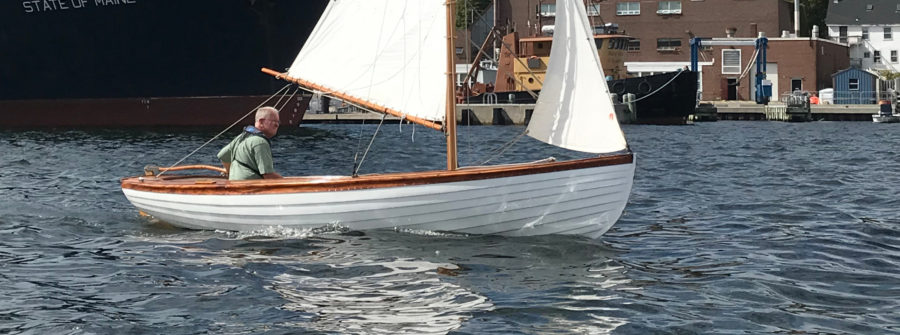
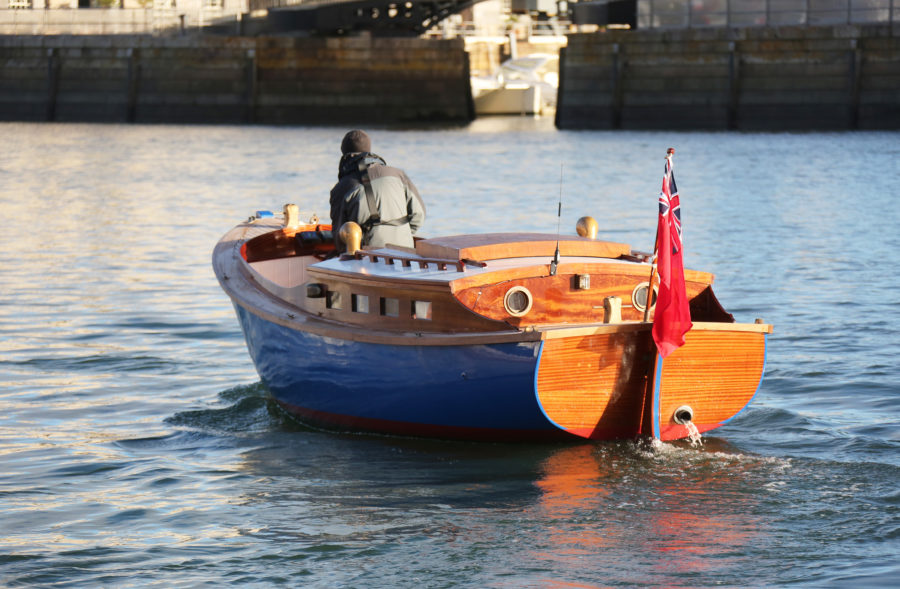
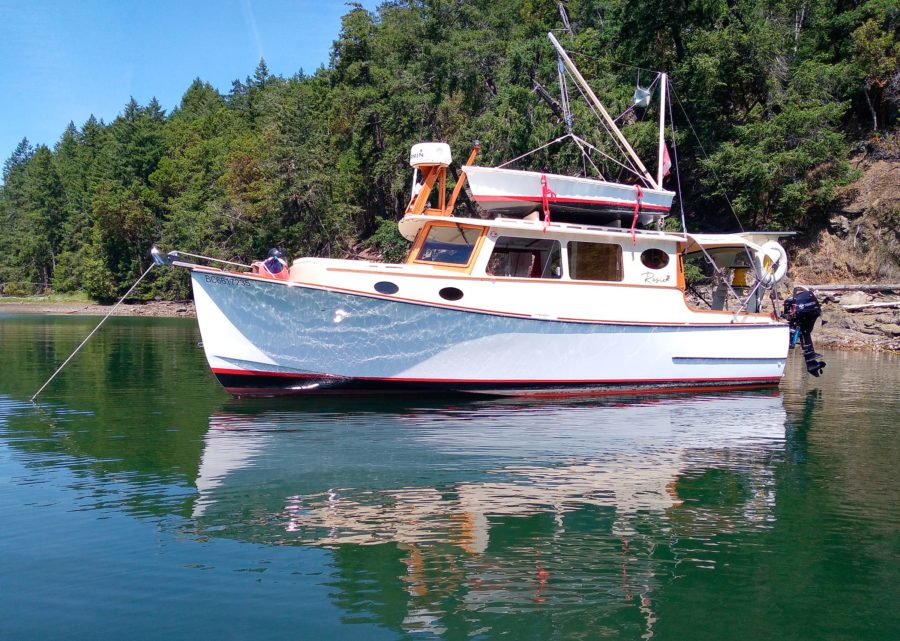
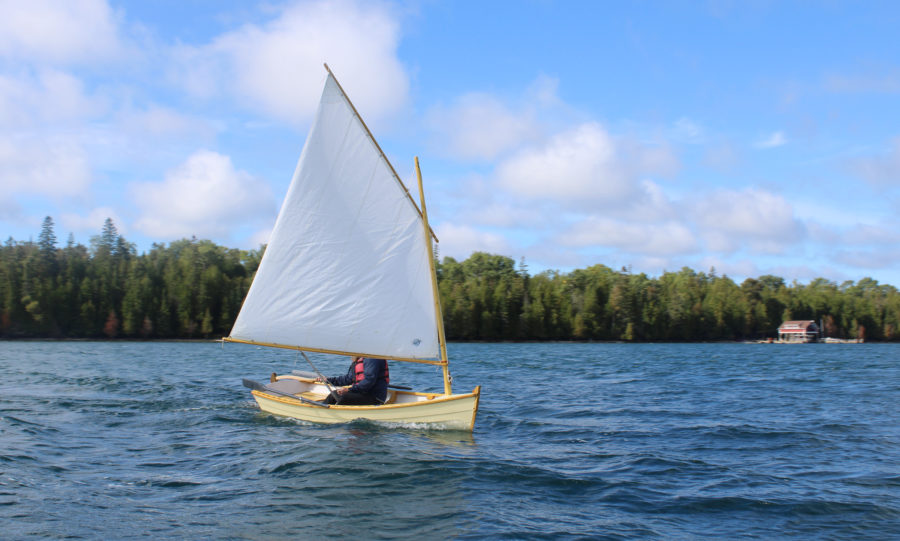
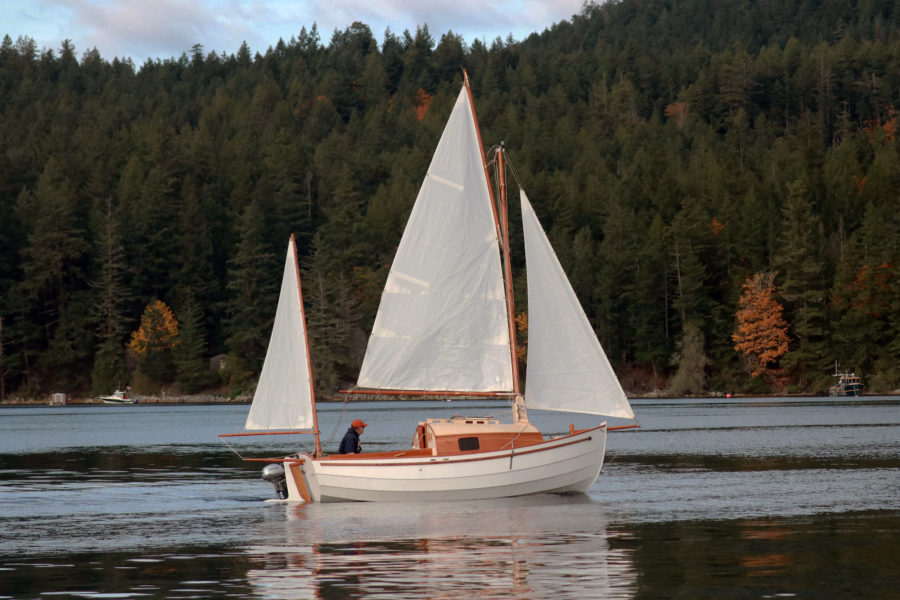
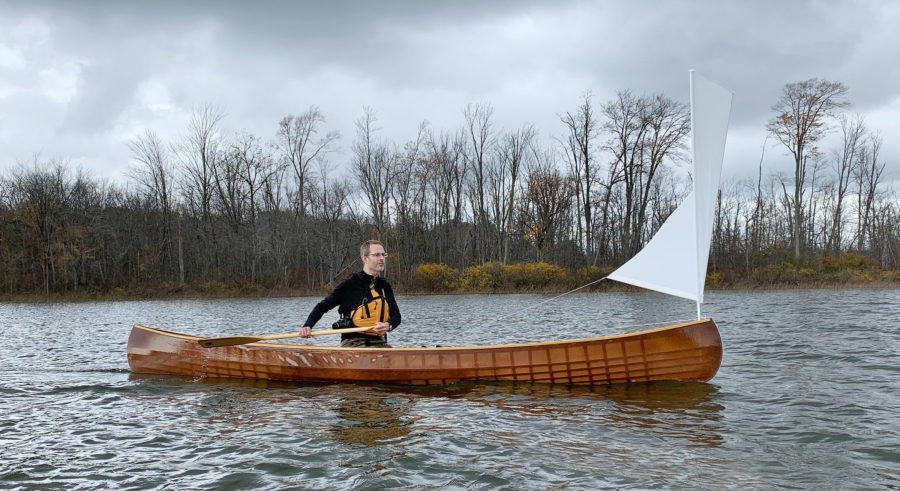
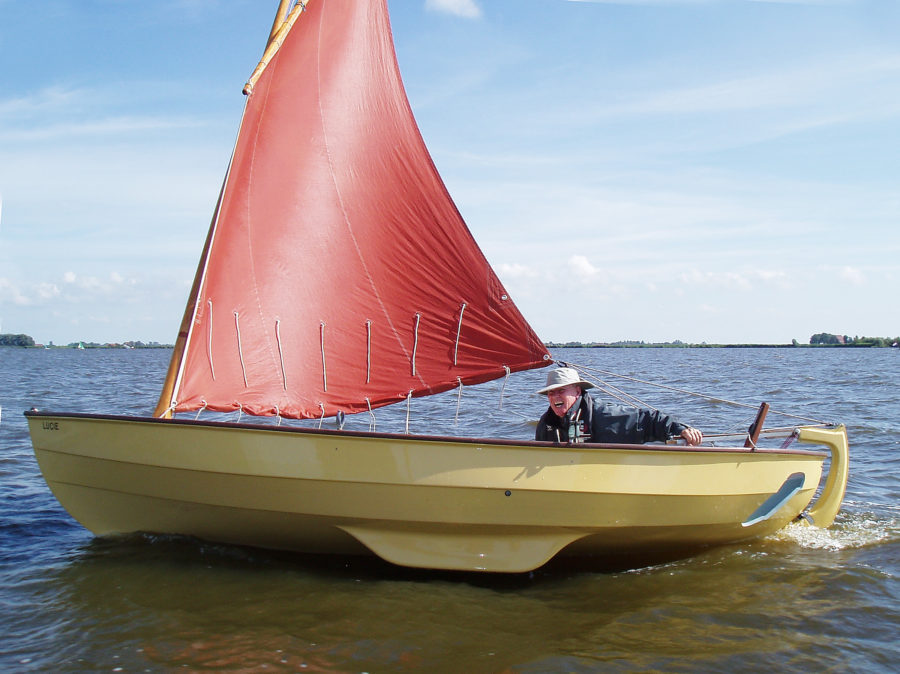
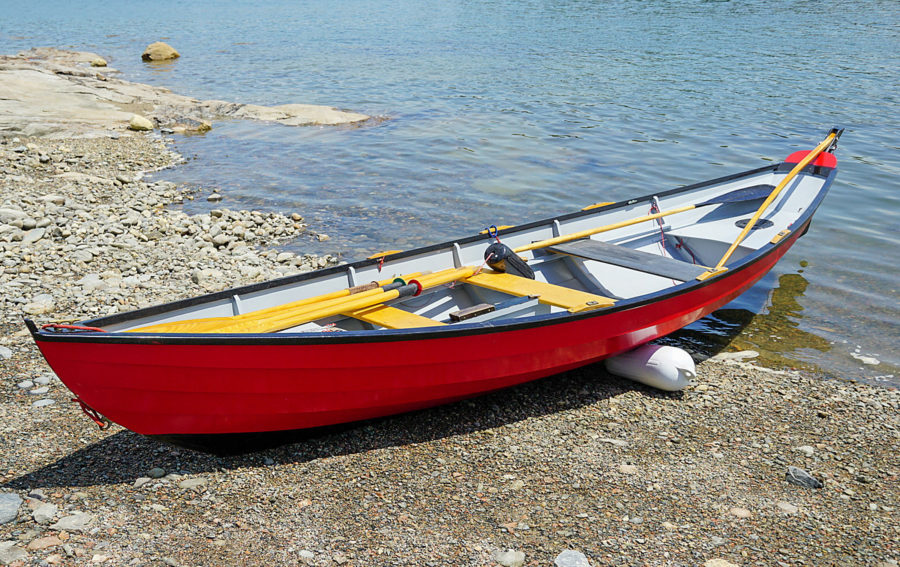
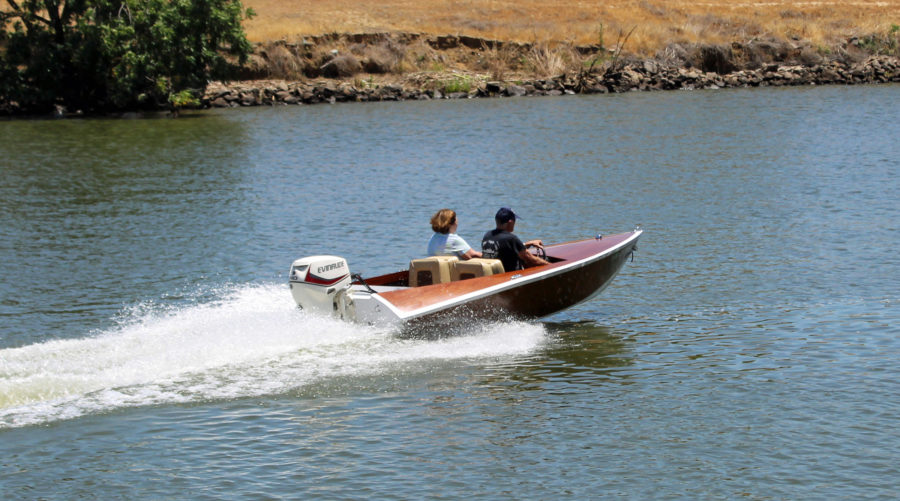
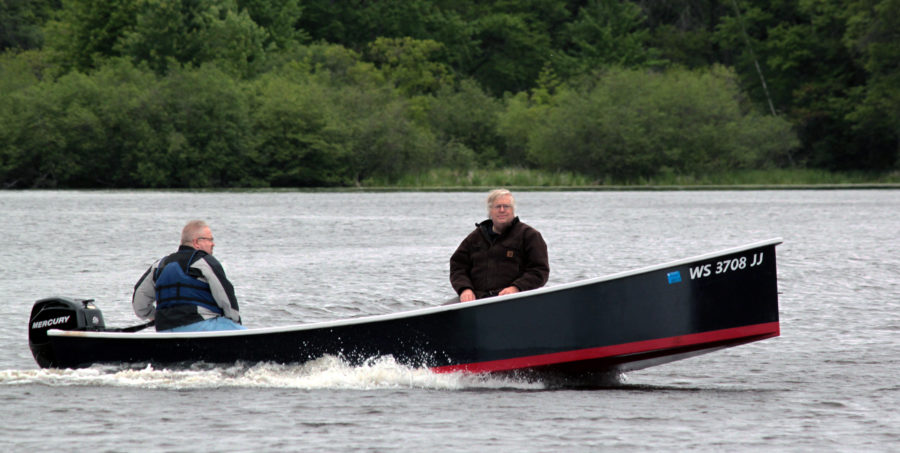

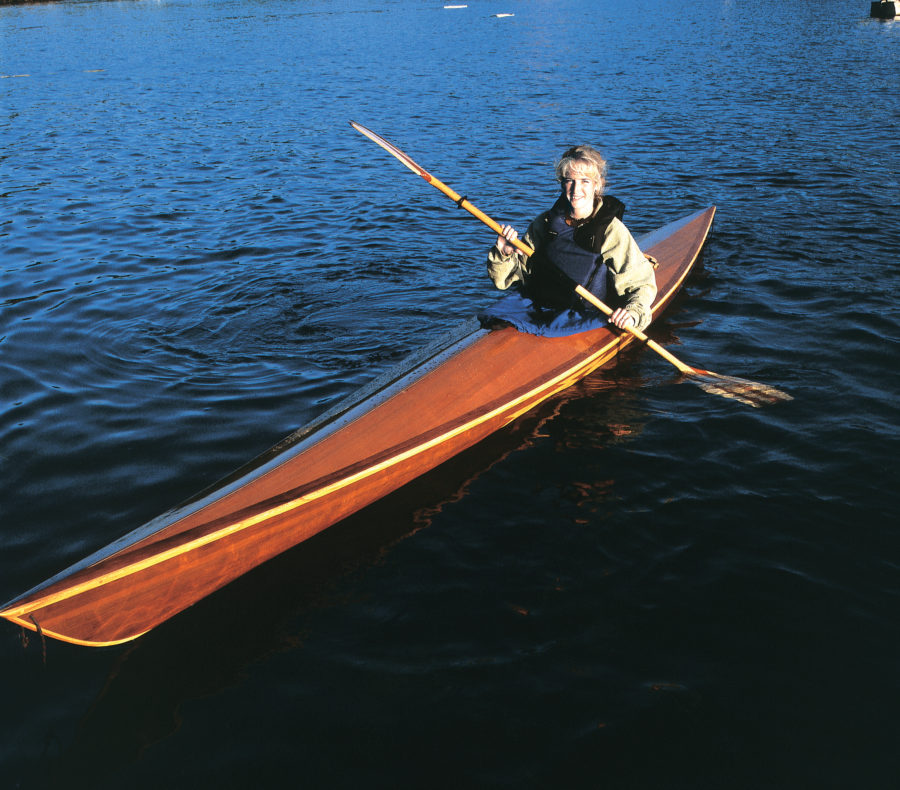
Excellent example of putting the process ahead of the project when teaching young students, which was my mantra for 32 years of teaching shop class (and building several six-hour canoes along the way). I would also add that I have observed how the bond between a student and their parent(s) was strengthened while building the six-hour canoe as a team. Determination, showing up on time, perseverance, actually having to do physical work, patience, and many other attributes are just a part of the positive qualities that are instilled in students taking on a project such as the six-hour canoe.
This was a really powerful and inspirational story thanks so much.
Thanks, Dan!
The experience of working with the kids and the wonderful mentors we’ve had has been inspirational. Working closely with Richard Butz, and my close friend, the amazing John Montague, who still teaches with us here at the Maritime Center all the time, is equally so.
Roger
You could probably use the stitch-and-glue method for the chines, instead of chine logs. It is quick, very strong, and, if you remove the wires after glue curing, can make for a smooth inside as well after filleting the joint with thickened epoxy.
This is my first time reading about the Six-Hour Canoe and I can’t stress enough how tempting it is to try to build one. Many thanks for the article! But here’s me: whenever I see a canoe, I just start dreaming of turning it into an outrigger with a small sail, even if only to sail downwind. Oh, and maybe a leeboard for some upwind fun. How suited would that design be for such daring “improvements”?
This is a good article, but I think it should say that a flat-bottom, hard-chine canoe is generally known as a pirogue.